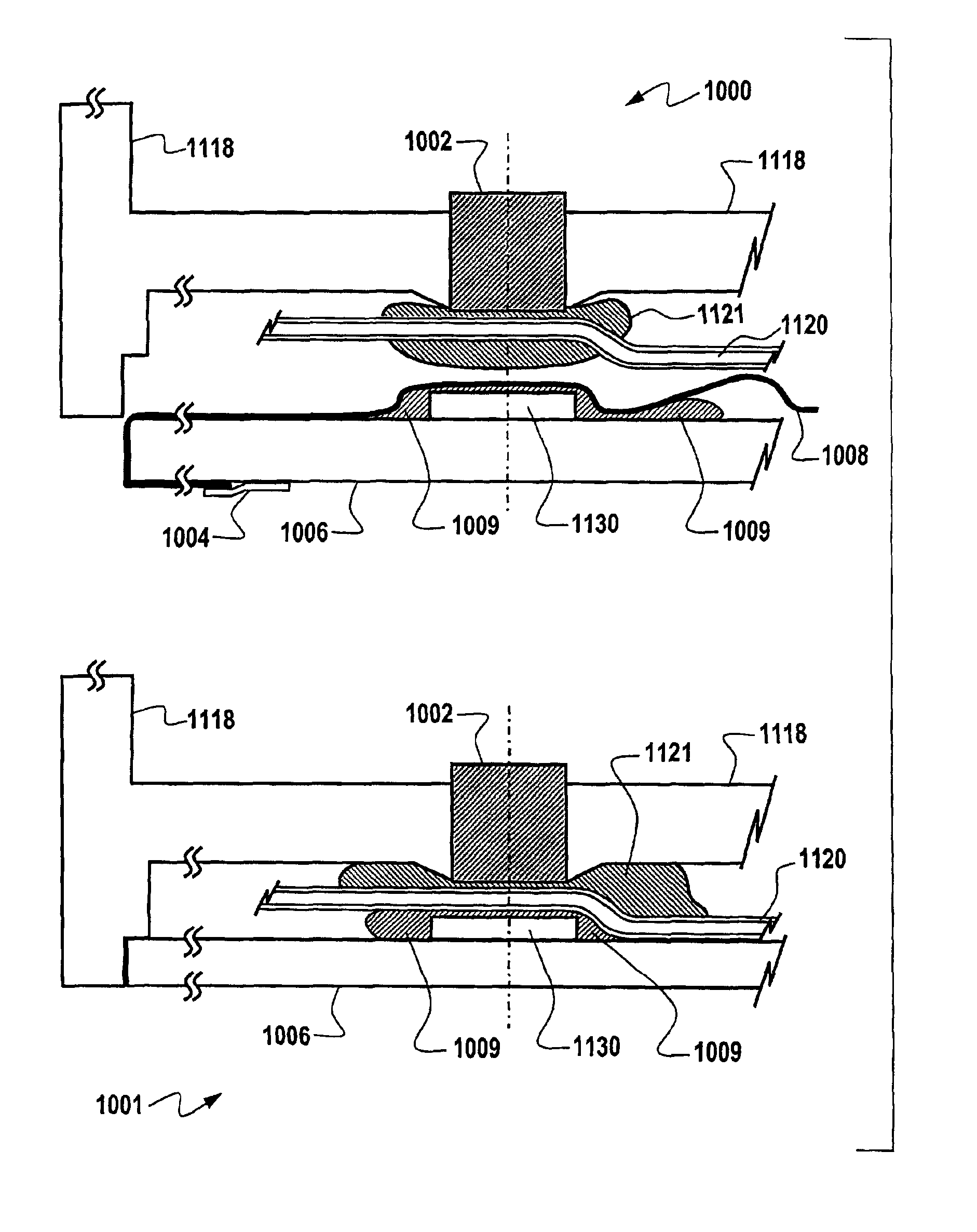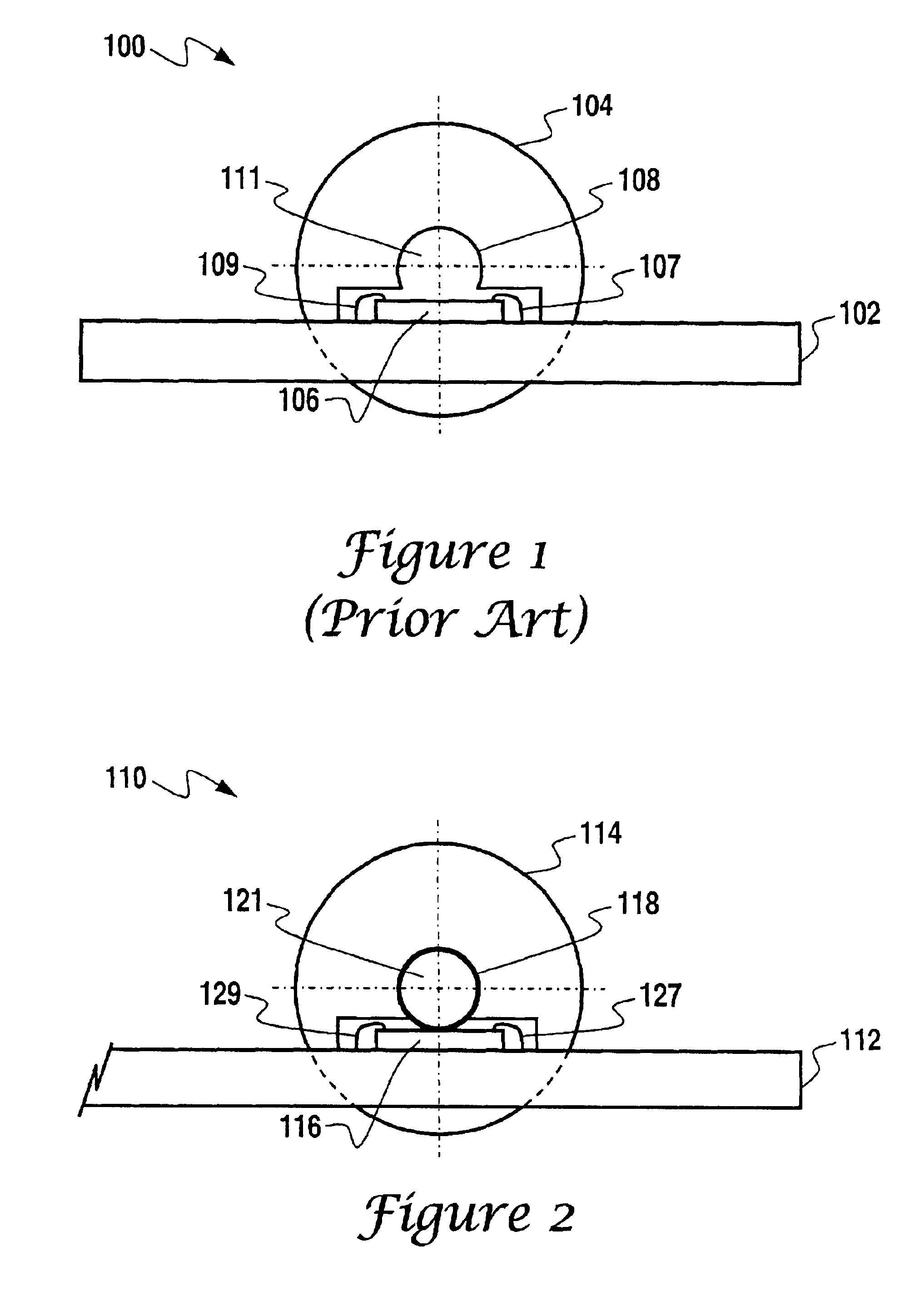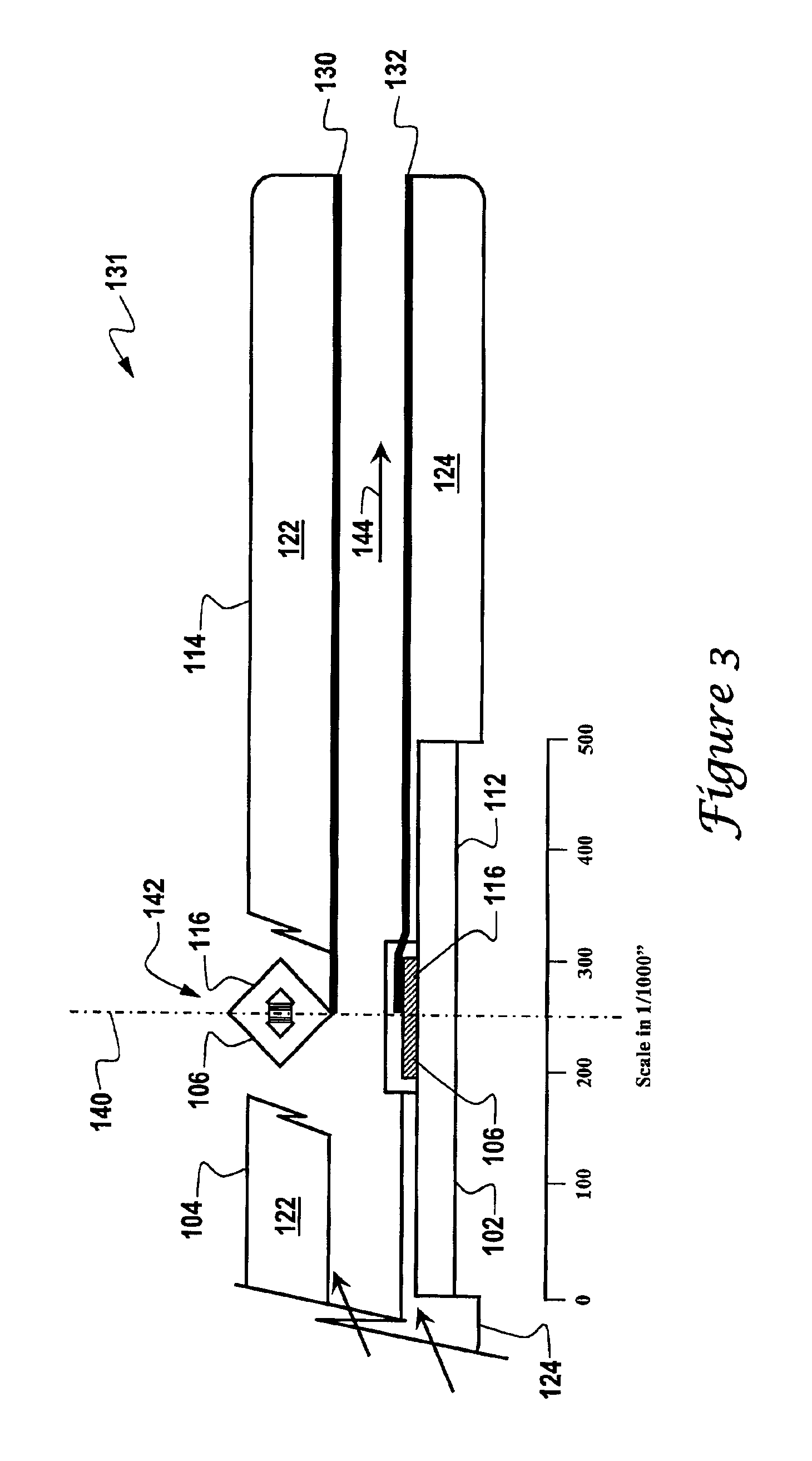Sensor package for harsh environments
a sensor and environment technology, applied in the direction of positive temperature coefficient thermistors, material heat development, instruments, etc., can solve the problems of unmet or met, unfavorable use of flow sensors, and insufficient cleaning or replacement, etc., to reduce the amount of structural machining needed, reduce the amount of structural machining, and achieve the effect of effective us
- Summary
- Abstract
- Description
- Claims
- Application Information
AI Technical Summary
Benefits of technology
Problems solved by technology
Method used
Image
Examples
Embodiment Construction
[0034]The particular values and configurations discussed in these non-limiting examples can be varied and are cited merely to illustrate preferred embodiments of the present invention and are not intended to limit the scope of the invention.
[0035]The present invention is related to the design and fabrication of the electrical insulation for electrical contacts to sensor chips using either front-wire-bond (FWB) or through-the-wafer (TTW) contacts of certain thermal flow microsensors or of environmental sensors in general. The present inventors previously insulated Au-wires and Au-pads of FWB sensor chips via materials, such as, for example, dip-coatings, dip-coatings with or without alumina thin-film undercoating, Si3N4, flowable sealants, solvent-resistant sealant with fluoro-silicon, and epoxies. Insulation based on such materials has been attempted as defined generally by the resistances between the sensing elements and the liquid (e.g., salt water) in a flow tube. Such resistance...
PUM
| Property | Measurement | Unit |
|---|---|---|
| resistance | aaaaa | aaaaa |
| resistances | aaaaa | aaaaa |
| temperature | aaaaa | aaaaa |
Abstract
Description
Claims
Application Information
 Login to View More
Login to View More - R&D
- Intellectual Property
- Life Sciences
- Materials
- Tech Scout
- Unparalleled Data Quality
- Higher Quality Content
- 60% Fewer Hallucinations
Browse by: Latest US Patents, China's latest patents, Technical Efficacy Thesaurus, Application Domain, Technology Topic, Popular Technical Reports.
© 2025 PatSnap. All rights reserved.Legal|Privacy policy|Modern Slavery Act Transparency Statement|Sitemap|About US| Contact US: help@patsnap.com



